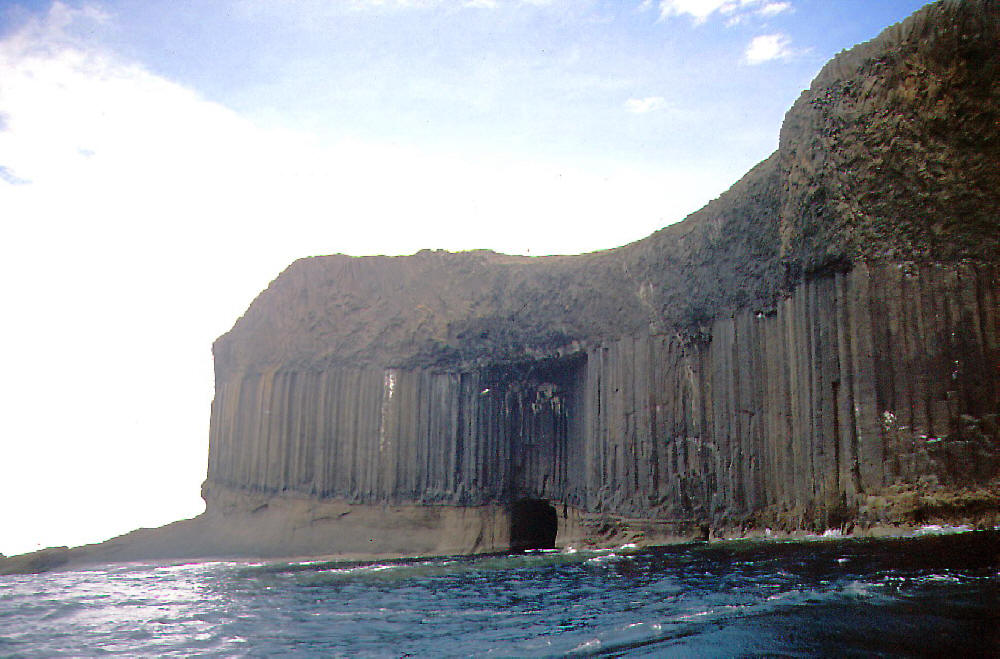







|

In pre-historic times Staffa was covered by the ice sheets which spread from Scotland out into the Atlantic Ocean beyond the Outer Hebrides. After the last retreat of the ice around 20,000 years ago, sea levels were up to 125 m lower than at present. Steadily rising sea levels since that time then further isolated this little island, which is entirely of volcanic origin. It consists of a basement of tuff, underneath colonnades of a black fine-grained Tertiary basalt, overlying which is a third layer of basaltic lava lacking a crystalline structure. By contrast, slow cooling of the second layer of basalt resulted in an extraordinary pattern of predominantly hexagonal columns which form the faces and walls of the principal caves. The lava contracted towards each of a series of equally spaced centres as it cooled and solidified into prismatic columns. The columns typically have three to eight sides, six being most common. The columns are also divided horizontally by cross joints.